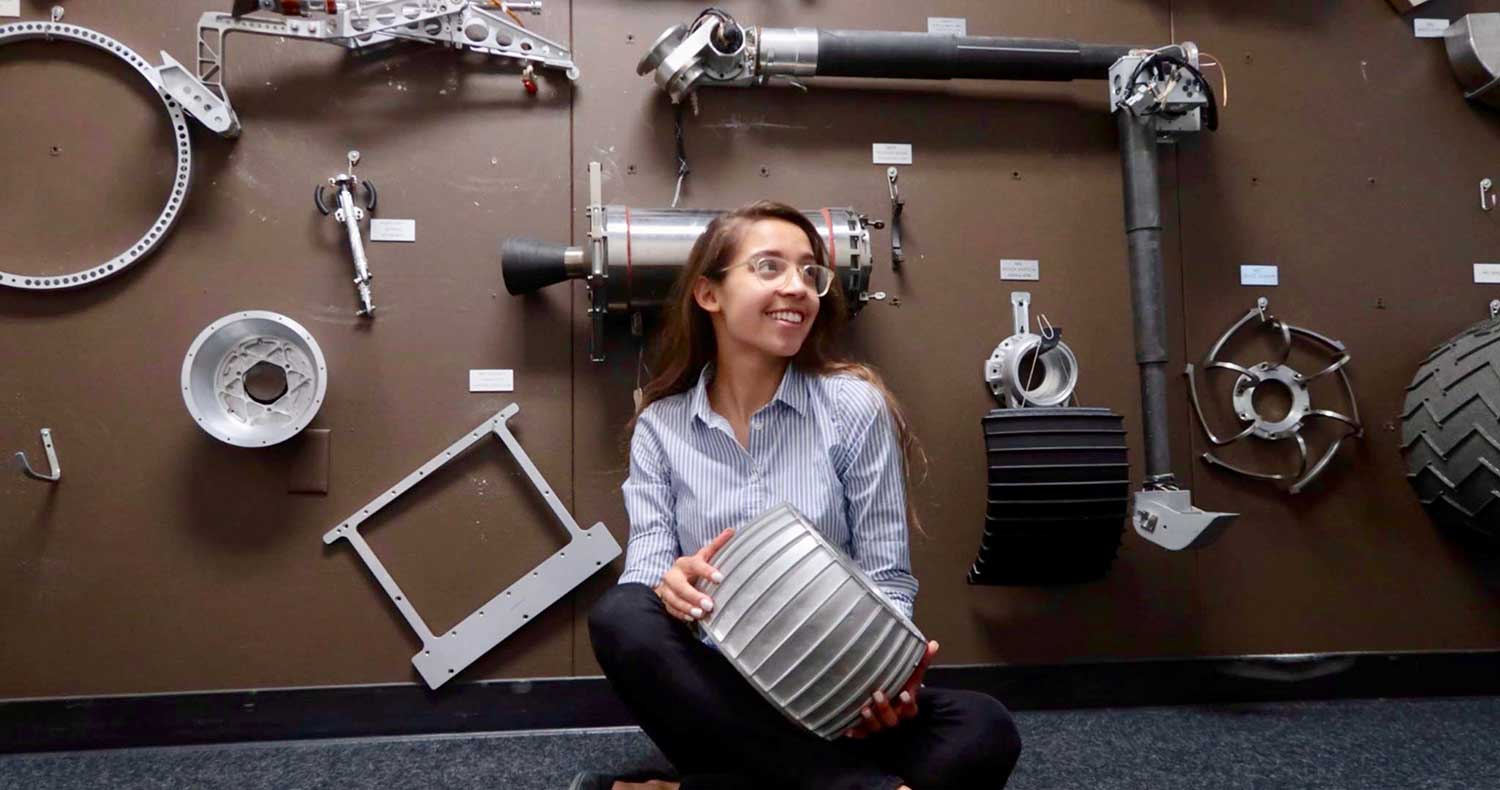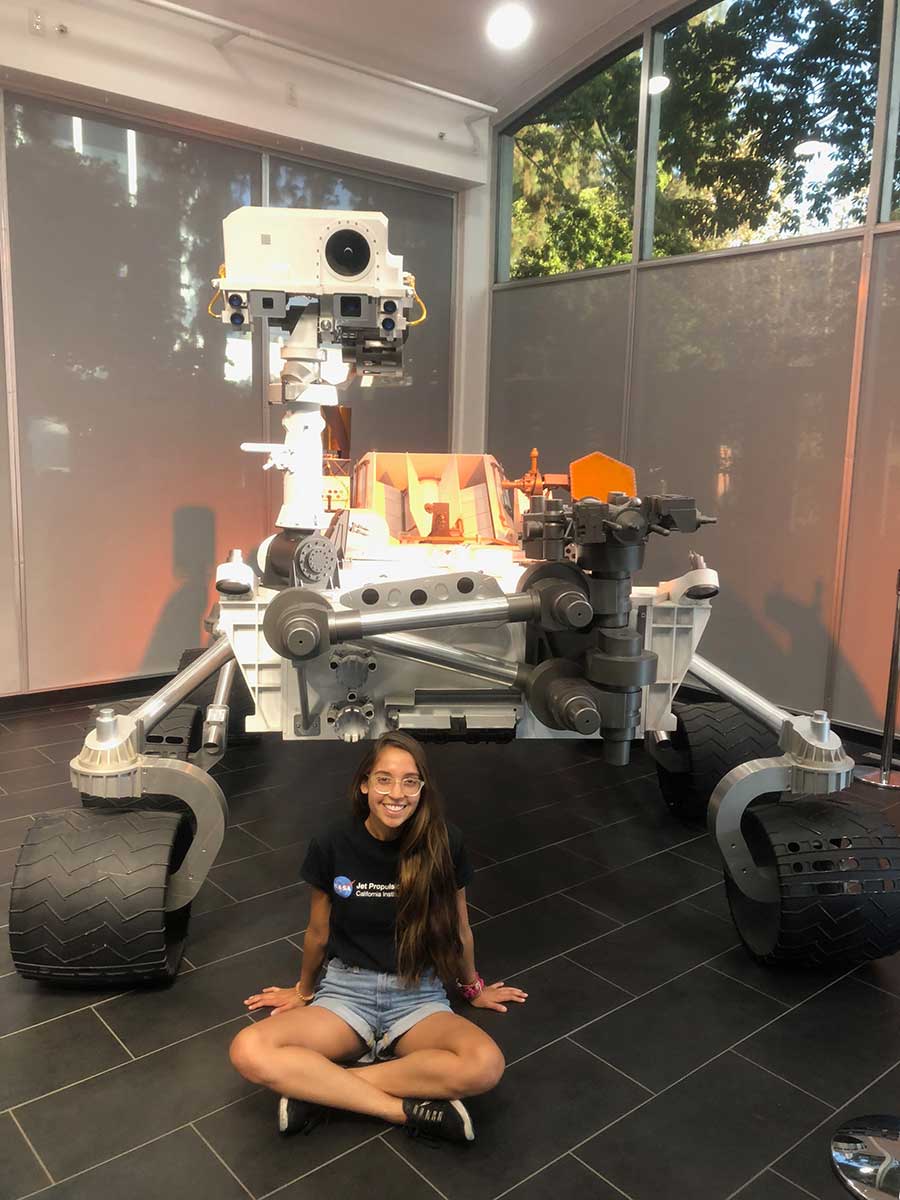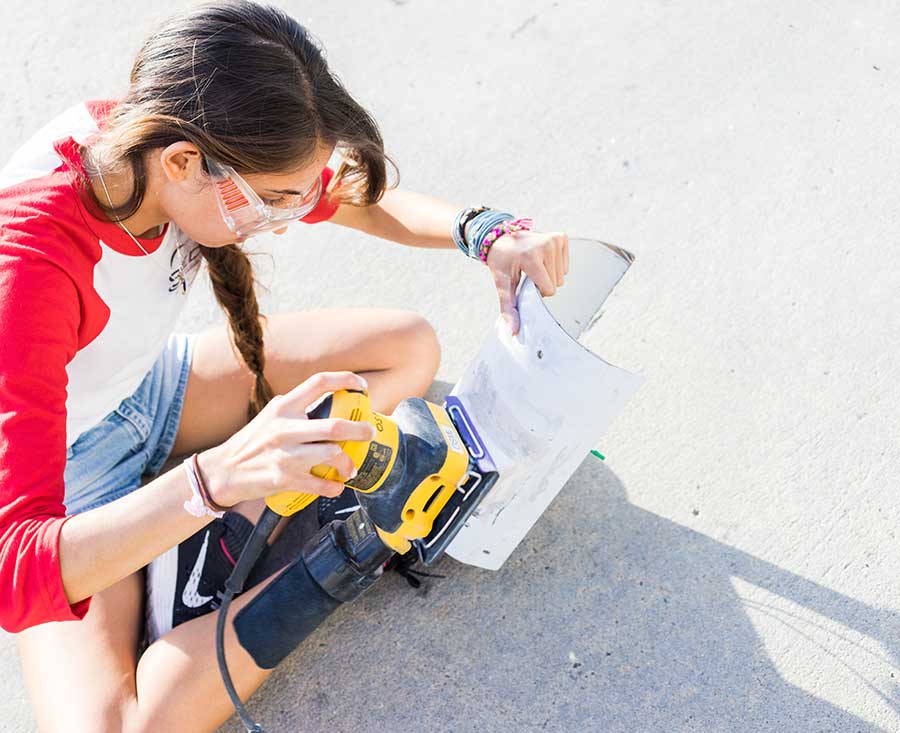
By:
- Katherine Connor
Published Date
By:
- Katherine Connor
Share This:

Hannah Munguia, an environmental engineering student, poses in front of spare parts from NASA’s Curiosity Rover during her time as an intern at NASA’s Jet Propulsion Lab.
Putting Earth Science Skills to Use.....on Mars
Hannah Munguia, a UC San Diego environmental engineering student with an earth science minor, had a revelation when she worked on the MARS 2020 Rover as an intern at NASA: there’s a place for environmental science and engineering in the aerospace world. That’s because aerospace technology is critical to shedding light on phenomena happening here on Earth.
Right now, for example, USAID Malaria Early Warning Systems use NASA data to predict malaria outbreaks with aerospace vegetation and temperature data. Satellite data also allow us to track deforestation in the Amazon and monitor crop health for future food security. The Human Rights Watch even uses space data to monitor loss of life and environmental damage during catastrophic events.
“Satellites are such a powerful tool in telling us how our world is changing,” Munguia said. “And I love that I can put environmental and aerospace engineering together in that way.”

Munguia with a model of the Curiosity Mars Rover at NASA JPL. Photo by Jocelyn Letona.
She recently received a Brooke Owens Fellowship for extraordinary undergraduate women in aerospace engineering, even as an environmental engineer. Munguia was also selected as a Gordon Fellow by the Gordon Engineering Leadership Center at UC San Diego.
A Chula Vista native, Munguia decided to become an engineer because it was a way to combine her interests in science and art. She chose environmental engineering with a minor in earth sciences because of her love of our planet.
A chance sighting of a flier from the Students for the Exploration and Development of Space (SEDS) club at the Jacobs School of Engineering led her to join the group. She developed an interest in space and aerospace engineering and served as the lead of the aesthetic structures portion of SEDS’ Vulcan-I rocket, the first ever student-built rocket powered by a 3D-printed engine. The aesthetic structures team was in charge of the exterior of the rocket, making it aesthetically pleasing and artistic while also using engineering principles to ensure it would withstand the pressures of takeoff, high-altitude, and landing.
This leadership experience with SEDS led her to the internship at NASA, working on the MARS 2020 Rover.
The rover has seven different tools on its instrument suite, and Munguia was working on one that will be looking for signs of life on the red planet—microfossils, biofilms, the chemical makeup of rocks. She was helping develop the structure that would keep the PIXL camera attached to the rover through all the wear and tear it’s expected to take during its mission.

Munguia works on the exterior structure of a rocket she helped build as part of the Students for the Exploration and Development of Space group at UC San Diego. She served as the lead of the aesthetic
“That was such an eye-opening experience for me because I got to work with engineers, but also with planetary scientists. And I found that it was so eye opening for me to really put two and two together that aerospace can go along with things like biology or earth science.”
Munguia returned to NASA as an intern for the next two summers, continuing to work on the PIXL camera but from the Danish Technical University in Copenhagen, Denmark for the second summer, and then developing an X-ray fluorescence tool that could one day analyze elements on other planets for her third summer.
As a Brooke Owens Fellow, Munguia will intern at Planet Labs after she graduates this spring, helping developing future satellites and further melding the aerospace technology behind the firm’s satellites, with its use for environmental purposes such as measuring climate change patterns on a global scale and assisting farmers by helping characterize soil quality and moisture. As part of the internship, Munguia will also receive mentorship from senior and executive level members of space and aviation companies—her personal mentor is Ellen Stofan, director of the National Air and Space Museum and the former chief scientist at NASA.
She said she hopes she can inspire other students who might have seemingly divergent interests figure out a way to meld the two together.
“I was always interested in the environment and space and never really understood how they came together. I see that now, but a lot of people don’t realize how powerful aerospace technology is for us here on Earth, and I hope I can help change that,” she said.
Share This:
You May Also Like
Stay in the Know
Keep up with all the latest from UC San Diego. Subscribe to the newsletter today.


